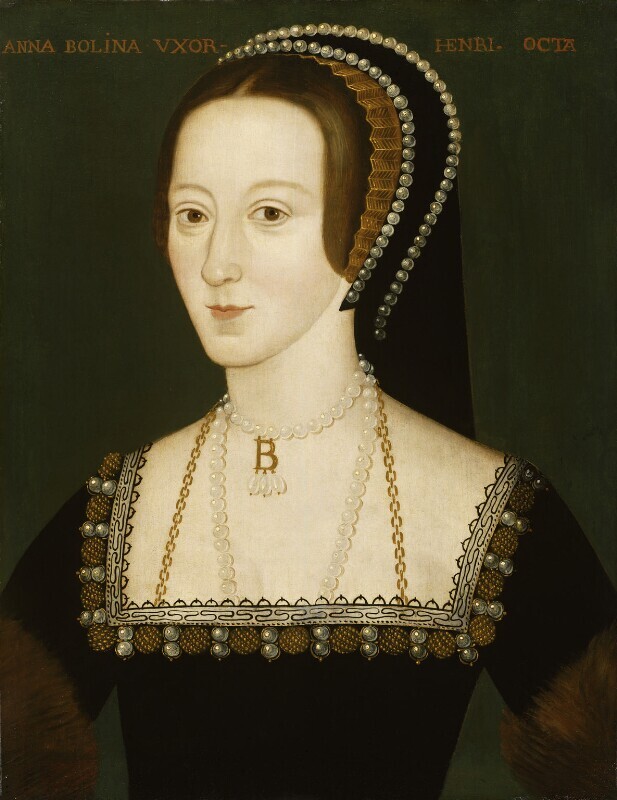Introduction
Anne Boleyn, whose French name was Nan Bullen, was the second wife of King Henry VIII. She was the Queen of England from 1533 to 1536. Anne was a powerful woman who used her femininity and sexuality to rise in the English political ranks, eventually becoming a very well-known queen. This exhibit will go through Anne’s life from her childhood at Hever Castle through the courtship between her and King Henry, and her time as queen. It will also explore her unfortunate end and the legacy she left behind. The exhibit features paintings depicting Henry courting a young Anne whilst in the middle of leaving his first wife. These paintings provide a glimpse into life at English court as they show people of prestige gathering in decadent settings. From there, the exhibit follows Anne Boleyn’s rise and fall as queen while showing portraits representing her during those times. Finally, learn of how Anne’s story not only continued to live on through her daughter, Queen Elizabeth I, after her passing, but in modern fashion and media as well. Anne inspired many things from the Broadway show, Six the Musical, to the film The Other Boleyn Girl. While going though this exhibit I encourage you to think about who Anne Boleyn was and how she captured Henry’s attention in such a way that gave her power over him. However, keep in mind, it was her overconfidence in holding Henry’s affection which led to her downfall.
To the left, is a portrait of Anne. It is considered to be one of the most famous, if not the most famous, painting of her. The painting is currently on display at the National Portrait Gallery in London, England. Due to the way the painting was made on a wooden panel, it has formed a popular reputation for itself amongst Tudor portraits. The panel on which the oil canvas was placed had been warped due to moisture, but it has since been treated. In addition to this, the portrait is remarkable for the way it captures Anne’s elegance as well as shows her signature “B” necklace. This necklace was one of Anne’s prized belongings and is still held in large association to her in modern representations, however it unfortunately disappeared after her death.
